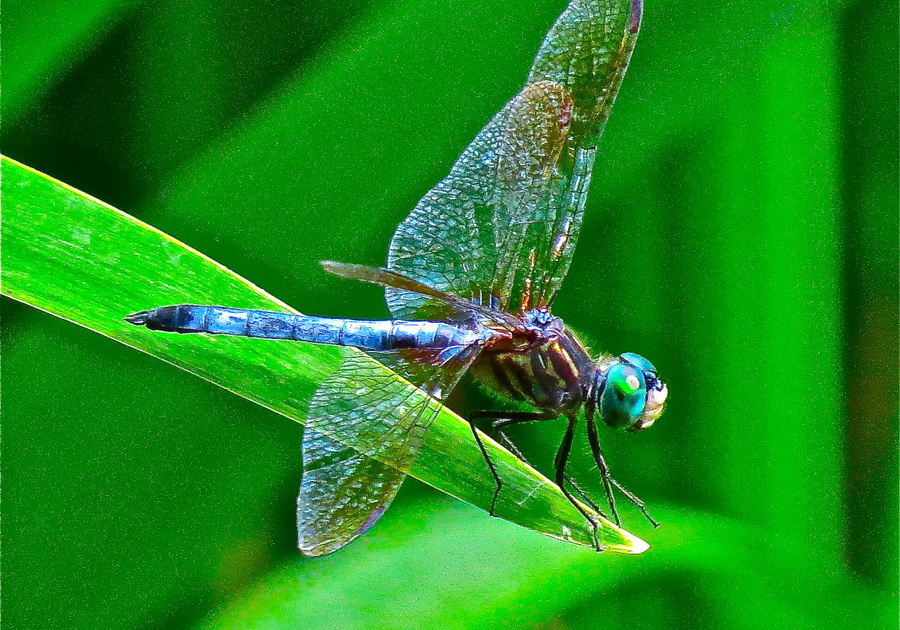Dragonfly watching can be fun for you and your children. These dazzling delights flit around our small pond area landing on pond foliage to soak in the sun and wait for a mate to fly by. They also may be hovering over wet grass and near other moist areas in your yard.
Illinois has over 147 species of dragonflies identified, and there are over 400 species in North America. These prehistoric looking creatures have been around for millions of years and used to be much larger than they are today.
Most dragonflies hunt, meet their mates and lay eggs near wet areas yet we often see them in parking lots and other peculiar areas during the summer months. They are members of the insect order Odonata.

My what big eyes you have!
Dragonfly bodies usually range from two to five inches long with wings of similar length. Although their bodies have three main parts (head, thorax and abdomen), it is most often their large, compound eyes that get our attention first. Their eyes are very important in spotting prey which usually consists of small insects. The thorax is the main part of the body to which the wings are attached. The abdomen contains the reproductive organs.
Males often defend territory around a water area by flying back and forth over it. Most wait for a female to fly into their territory so they can begin a courtship ritual called a tandem flight. Once the couple has mated, the female deposits her eggs (ovipositing) along submerged pond foliage or near pond habitat, depending on the dragonfly species.
Most eggs will hatch in a few weeks. Larvae will emerge and feed off worms, other insect larvae or baby fish. As the larvae develop, they shed their outer skins and become the winged dragonfly delights we are most likely to see.

Driven by Food
The adult dragonfly is driven by a need for food. Sometimes they catch their insect prey in midair called “hawking.” Other times, they “glean” or hover over an area where prey are perched and then swoop down to grab it. Most “patrol” their hunting grounds by flying back and forth over it.
A good introductory book to dragonflies is the “Stokes Beginner’s Guide to Dragonflies and Damselflies” by Blair Nikula and Jackie Sones. It’s easy to use and shows most dragonflies we see in Illinois.
Often when I’m working around our small ornamental pond, a curious dragonfly will follow me around the pond area perching on vegetation as I move. How delightful is that! And don’t worry; it’s an old dragonfly tale that they sting. Enjoy these dazzling delights.

Deanna Frautschi is a Master Naturalist who is passionate about connecting families with nature. Using her knowledge of wildlife and her photography skills, she helps others enjoy the nature around them. If you have any questions about exploring nature with your children and grandchildren, you may contact Deanna at Decardinal@aol.com. Join the hundreds who follow her on Facebook where she posts photographs and short video clips of birds and other wildlife taken on her travels as well as in her yard. You can also join her "Hummingbirds Anonymous" Facebook group page.
Story and photos by Deanna Frautschi.



